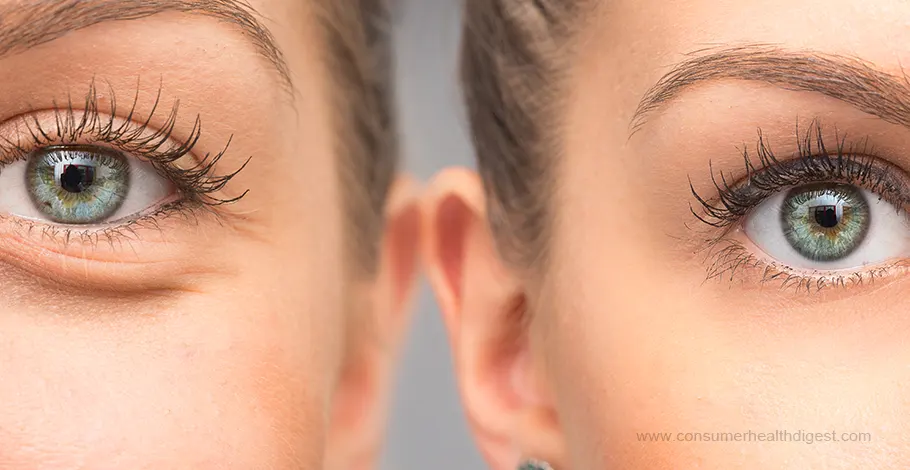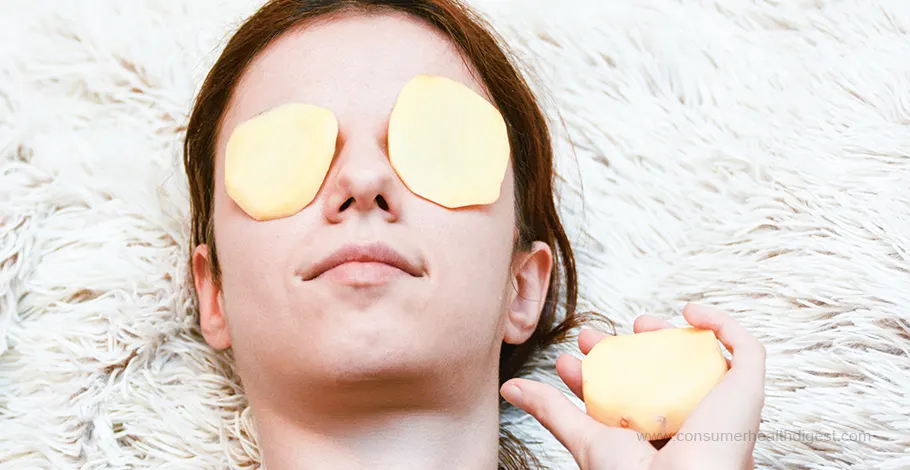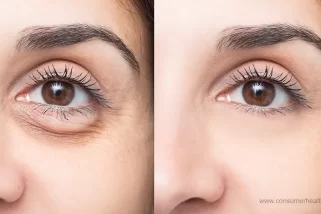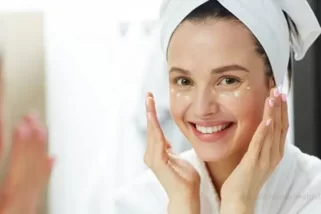Introduction
Under-eye bags are a common concern for many people, often causing distress and affecting self-confidence. These puffy or swollen areas under the eyes can be caused by various factors such as aging, allergies, lack of sleep, and genetics. In this guide, we'll explore how to diagnose and treat under-eye bags effectively, using practical strategies and remedies.

Understanding Under Eye Bags
Under-eye bags, medically termed as periorbital puffiness, are the swollen or puffy areas beneath the eyes. These bags can create a tired, older, or even unwell appearance, which can significantly affect one's overall appearance and confidence. [1]
Common symptoms associated with under-eye bags include puffiness, dark circles, and a tired or droopy look around the eyes. Although under-eye bags are frequently linked with aging, they can impact individuals of all ages due to various factors such as genetics, lifestyle choices, and environmental influences.
In essence, under-eye bags are a cosmetic concern that results from a combination of factors including genetics, lifestyle habits, and environmental factors. Understanding the causes and symptoms of under-eye bags is crucial for implementing effective prevention and treatment strategies to enhance both physical appearance and emotional well-being.
Diagnosis of Under Eye Bags
Diagnosing under-eye bags involves a thorough examination by a medical professional, typically a dermatologist or an ophthalmologist. During the evaluation, the doctor will assess the severity of the puffiness, examine any accompanying symptoms, and inquire about your medical history. Understanding the underlying causes of your under-eye bags is crucial for developing an effective treatment plan.
Topical Treatments and Home Remedies for Under-Eye Bags
Over-the-counter eye creams and serums formulated to reduce puffiness and dark circles can be effective in improving the appearance of under-eye bags. Look for products containing ingredients like retinol, caffeine, hyaluronic acid, and vitamin C, known for their ability to stay hydrate the skin, improve circulation, and reduce inflammation. [2]
Caffeine Eye Creams:
Eye creams containing caffeine are known to constrict blood vessels and reduce fluid retention, which can help alleviate under-eye puffiness. Gently apply a small amount of caffeine-infused eye cream to the under-eye area and gently pat until absorbed. [3]
Hyaluronic Acid Serums:
Hyaluronic acid is a hydrating ingredient that helps plump and moisturize the skin. Serums containing hyaluronic acid can help smooth out the under-eye area, reducing the appearance of fine lines and wrinkles associated with under-eye bags. [4]
Cold Compresses:
Applying cold compresses to the eyes can help reduce swelling and inflammation, providing immediate relief for under-eye bags. Use a chilled eye mask, cucumber slices, or dampened tea bags and place them over closed eyes for 10-15 minutes.
Aloe Vera Gel:
Aloe vera gel is known for its soothing and anti-inflammatory properties. Applying a small amount of pure aloe vera gel to the under-eye area can help reduce puffiness and calm irritated skin.
Green Tea Bags:

Green Tea Bags for Eyes. Shutterstock Image
Green tea contains antioxidants and tannins that help shrink blood vessels and reduce swelling. After steeping green tea bags in hot water, allow them to cool, then place them over closed eyes for 10-15 minutes to soothe and de-puff the under-eye area. [5]
Potato Slices:

Use Potato Slices to Treat Puffy Eyes. Shutterstock Image
Raw potato slices contain enzymes and starches that can help reduce puffiness and dark circles. Slice a cold potato into thin slices and place them over closed eyes for 10-15 minutes to help refresh and revitalize tired eyes.
Chamomile Tea Compresses:
Chamomile tea has anti-inflammatory properties that can help reduce under-eye puffiness. After steeping chamomile tea bags in hot water, allow them to cool, then place them over closed eyes for 10-15 minutes to help soothe and calm the under-eye area.
Rosewater:
Rosewater is a natural astringent that can help tighten and tone the skin. Soak cotton pads in chilled rosewater and place them over closed eyes for 10-15 minutes to help reduce swelling and refresh the under-eye area.
Medical Interventions
In cases where lifestyle changes and topical treatments are ineffective, medical interventions may be necessary. Cosmetic procedures such as eyelid surgery (blepharoplasty), dermal fillers, and laser therapy can help reduce under-eye bags and restore a more youthful appearance. These procedures are typically performed by qualified dermatologists or plastic surgeons and require careful consideration of potential risks and benefits. [6]
Management Strategies
Developing a personalized treatment plan in consultation with a healthcare professional is essential for effectively managing under-eye bags. Consistency in following prescribed treatments and lifestyle modifications is key to achieving optimal results. Regular monitoring of progress and adjustments to the treatment plan as needed can help address any underlying issues and prevent recurrence of under-eye bags.
Conclusion
In conclusion, under-eye bags can be a persistent and bothersome issue for many individuals, impacting both appearance and self-esteem. However, with proper diagnosis and treatment, it's possible to minimize the appearance of under-eye bags and achieve a more refreshed and youthful look.
By adopting healthy lifestyle habits, exploring topical treatments and home remedies, and considering medical interventions when necessary, you can effectively manage under-eye bags and regain confidence in your appearance.
Remember, seeking professional guidance from a dermatologist or healthcare provider is crucial for determining the most appropriate treatment options based on your individual needs and concerns. With patience, consistency, and the right approach, you can successfully address under-eye bags and enjoy a brighter, more vibrant appearance.
6 Sources
We review published medical research in respected scientific journals to arrive at our conclusions about a product or health topic. This ensures the highest standard of scientific accuracy.
[2] "Good hydration linked to healthy aging." NHLBI, NIH, 11 Mar. 2024, www.nhlbi.nih.gov/news/2023/good-hydration-linked-healthy-aging.
[3] Ahmadraji F, Shatalebi MA. Evaluation of the clinical efficacy and safety of an eye counter pad containing caffeine and vitamin K in emulsified Emu oil base. Adv Biomed Res. 2015 Jan 6;4:10. doi: 10.4103/2277-9175.148292. PMID: 25625116; PMCID: PMC4300604.
[4] Juncan AM, Mois? DG, Santini A, Morgovan C, Rus LL, Vonica-?incu AL, Loghin F. Advantages of Hyaluronic Acid and Its Combination with Other Bioactive Ingredients in Cosmeceuticals. Molecules. 2021 Jul 22;26(15):4429. doi: 10.3390/molecules26154429. PMID: 34361586; PMCID: PMC8347214.
[5] Musial C, Kuban-Jankowska A, Gorska-Ponikowska M. Beneficial Properties of Green Tea Catechins. Int J Mol Sci. 2020 Mar 4;21(5):1744. doi: 10.3390/ijms21051744. PMID: 32143309; PMCID: PMC7084675.
[6] Naik MN, Honavar SG, Das S, Desai S, Dhepe N. Blepharoplasty: an overview. J Cutan Aesthet Surg. 2009 Jan;2(1):6-11. doi: 10.4103/0974-2077.53092. PMID: 20300364; PMCID: PMC2840922.







 This article changed my life!
This article changed my life! This article was informative.
This article was informative. I have a medical question.
I have a medical question.
 This article contains incorrect information.
This article contains incorrect information. This article doesn’t have the information I’m looking for.
This article doesn’t have the information I’m looking for.